| Umělec 2004/4 >> Revolution in Romania | Просмотр всех номеров | ||||||||||||
|
|||||||||||||
Revolution in RomaniaUmělec 2004/401.04.2004 Jiří Ptáček | commentary | en cs |
|||||||||||||
|
The National Museum of Contemporary Art (MNAC) in Bucharest lies in a bizarre place. The memory of one of the biggest architectonical eccentricities of late communism, Ceauşescu’s palace, House of the People can not be so easily erased. Even when a democratic parliament moves in there from one side and the museum of contemporary art from the other, its genius loci breathes down at you right at its main entrance. Then, you are stopped by a security guard (of a democratic parliament) who demands (in Romanian) to know who you are, and asks why you are going into the museum.
Maybe that is why the culmination of curator František Kowolowski’s Frisbee exhibition in the mediatheque of MNAC was a performance by Martin Zet. Appearing at the balcony of the palace, he suspended an all-red US flag over the facade. The symbol of an absurd revolution hung over the garden while in the front court, oriented toward the monumental boulevard, fluttered a similarly absurd mixture of reality and hope: flags of Romania, NATO and the EU. A small group of sympathizers recorded Zet’s action on video. But the best record was that of parliamentary security—the museum is constantly scanned by industrial cameras. The museum has five floors of exhibition halls, in the conditions of a communist country, equipped with top technology... but at the same time the isolation of the House of the People from the city center and echoes of sharp disputes, who and how will be profiling the image, do the exhibition, command – such is the MNAC of these days. On one side of a barricade is the museum; on the other, a group of independent intellectuals and artists grouped around the Perjovsky couple. Thanks to international prestige of and media skills of the opposition leaders, awareness of the dispute has spread beyond the borders. An international visitor of MNAC can’t help but wonder why the critique is heard now, when the museum opens its doors for the first time. A few significant personalities of young Romanian art refused to participate in the first domestic exhibition Romanian Artists (and not only) Love Ceauşescu’s Palace?!. And maybe that is why the resulting exposition was nothing more than a feeble attempt at a site-specific action. The two queries in the would-be provocative title—“not only” and the question mark in front of the exclamation mark—was a little bit too much. The traditional one hundred day trial period respected among politicians did not apply for this event. Maybe it is more attractive than waiting for the museum managers to define and realize their dramaturgical intentions. Or is it that the art public is afraid that, as at Prague’s Veletržní palác, it could take a few years before it becomes clear that the museum headquarters has no clue about how to deal with 21st century art? Frisbee on the Twilight of Uncertainty Frisbee would surely be one of the smaller presentations of Czech art abroad, if it hadn’t been held right after the opening of a new museum of contemporary art and if it wasn’t Bucharest’s MNAC. This was the first exhibition of its normal operation. The mediatheque of the MNAC is on the highest floor of the museum, right next to a perfectly designed and sterile cafeteria. It is not a standard exhibition space: There were two projection halls and there was one huge central office space isolated by interior glass screens. But František Kowolowski showed that it can contain new media presentations. He composed Frisbee to show present day Czech video and animation, he decided to present a few big-screen projections, and he managed the unresponsive space perfectly. The only drawback was the unblackened main hall; in daylight one of the projections could not be seen properly. Kowolowski’s selection well represented the diversity and the borad spectrum of expression in the media of video and animation. It is indeed impressive to observe how these two categories intertwine and influence each other in the digital software era. A visitor expecting a more concrete interpretative model might have been disappointed. Kowolowski didn’t have a projector for all of the 17 participants. An individual room and technology was dedicated to the 15-minute slideshow of Michal Pěchouček’s Kočárkárna (Pramroom). Other shots were set into partial “subcollections.” In the text for the exhibition, the curator stated the importance of “border contexts” and system anomalies as is “indefiniteness, unsystemic character, nonsense–or even more–imagination.” But he treds on thin ice trying to present these qualities in limiting conditions. In these “subcollections,” one could follow the curator’s systemic objectives. The juxtaposition of Jiří Surůvka’s video with that of Martin Zet made the latter seem surprisingly kind and poetic, and the former less kind and more satirically self-ironic. And the works of Petr Zubek and Pavel Mrkus, who both work with 3D animation, projected a strong contemplative impact on the viewer. The grouping of formerly associated animators, Pavel Ryška, Jan Šerých, the Rekord group and Filip Cenek with Jiří Havlíček, the differences distinguish author’s intentions were distorted. The quality of the work the chosen Frisbee was unbalanced. The intended “random sampling” of indefiniteness worked only with the concept as a whole, but its practical segmentation was done in a haphazard way. The most bizarre grouping was the combination of Jan Nálevka’s destructive scenes from Japanese Gappa movies with Guma Guar’s frantic, rapid and engaged slideshow from last year’s CzechTek, and David Možný’s triphop music video Virtual Soul Waste. This failed to clearly articulate the stated subject of “border contexts” and “anomalies.” Rather the objective seemed to be to stick the noisiest videos into one, isolated projection hall. Frisbee didn’t carry out its curatorial resolutions, as if Kowolowski got scared at the last minute that his choices might look impetuous. In the end he only quickly stitched together curatorial commentary. However, he did was successful, in addition to the DVD catalog, starting a web page (http:// www.dumb.cz/frisbee/) showing examples of all the exhibited works. In addition, the Dům umění of Brno was linked via Internet connection with Bucharest’s MNAC possibly signaling the beginning of the building of communicative structures—which is what the museum needs most these days. The Certainty that the Future is Uncertain Martin Zet stepped onto the balcony of the House of the People on the same day that the political campaigns of Romanian parliament elections were at their peak. His rebellious speech resounded through the garden like a specter. The words of MNAC Art Director Ruxandra Balaci sounded similarly spirited as he spoke about the fragile relationships between culture and power: “According to the results of the elections we will see what the future of the museum will be like. The present government is on our side, but the budget for the next year will decide the next one. We are independent, but at the same time we are financially dependent on the state. At the moment we can’t be sure who will be the new Minister of Culture and what his relation towards us will be like. In the spring we want to open a bookstore and take steps to creating a high quality program for MNAC, and become a respectable museum of contemporary art. It is diffucult to estimate anything now.” A few days later the opposition won the elections...
01.04.2004
Рекомендуемые статьи
|
|||||||||||||
|
04.02.2020 10:17
Letošní 50. ročník Art Basel přilákal celkem 93 000 návštěvníků a sběratelů z 80 zemí světa. 290 prémiových galerií představilo umělecká díla od počátku 20. století až po současnost. Hlavní sektor přehlídky, tradičně v prvním patře výstavního prostoru, představil 232 předních galerií z celého světa nabízející umění nejvyšší kvality. Veletrh ukázal vzestupný trend prodeje prostřednictvím galerií jak soukromým sbírkám, tak i institucím. Kromě hlavního veletrhu stály za návštěvu i ty přidružené: Volta, Liste a Photo Basel, k tomu doprovodné programy a výstavy v místních institucích, které kvalitou daleko přesahují hranice města tj. Kunsthalle Basel, Kunstmuseum, Tinguely muzeum nebo Fondation Beyeler.
|







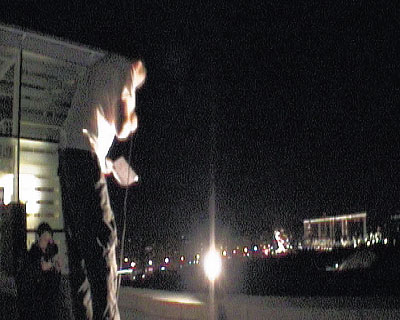
















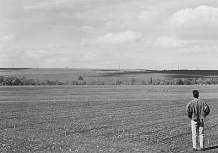




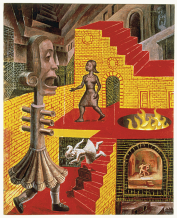
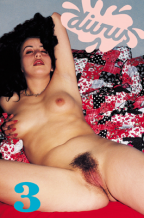
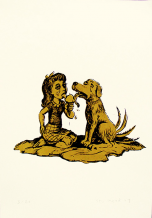
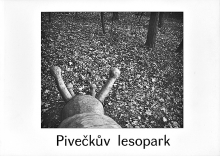


 We Are Rising National Gallery For You! Go to Kyjov by Krásná Lípa no.37.
We Are Rising National Gallery For You! Go to Kyjov by Krásná Lípa no.37.
Комментарии
Статья не была прокомментированаДобавить новый комментарий